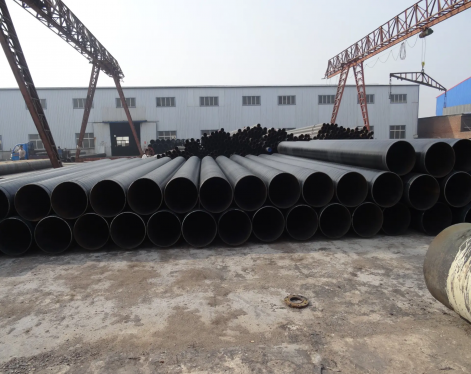Long strips of steel such as seamless pipes and welded pipes are often bent or twisted due to external forces, temperature changes, and internal forces during rolling, forging, extrusion, drawing, transportation, cooling, and various processing processes. In order to obtain straight finished strips, these defects are eliminated through the straightening process. The reasons for the bending or twisting of the above strips are as follows:
(1) During the rolling process, the rolled piece is deflected due to uneven reduction (especially steel with special-shaped cross-section), uneven cooling, inconsistent speed of the upper and lower rolls, or inaccurate pass adjustment;
(2) Due to the asymmetric cross-sectional shape of the bar and the uneven thickness of the cross-section, the heating and cooling after rolling are uneven, resulting in longitudinal or transverse bending deformation of the bar;
(3) Operations such as sawing and shearing the strip in a hot state will also cause the strip to bend;
(4) The strip in the hot state after rolling stays on the transport roller table for too long, and the strip will also be bent due to self-weight and other reasons.

Straightening of steel pipes
The essence of straightening is the elastic-plastic deformation of the steel pipe after it is subjected to external forces of the same type and size. When the external force is removed, elastic recovery occurs under the action of internal force until the internal force reaches a new balance and the required shape. The straightening of steel pipe is a repeated elastic-plastic deformation process. That is to say, under the condition of obvious elastoplastic bending, the elastic recovery ability of the steel pipe is almost the same. Therefore, no matter how inconsistent the original curvature of the steel pipe is, after being subjected to a large bending, the curvature can be almost uniform everywhere, so as to achieve a straight effect. Considering the different bending characteristics of steel pipes with different cross-sectional shapes and the difference in straightening goals, the reverse bending straightening method is generally used for straightening plates and profiles, while the rotary straightening method is used for straightening pipes.
(1) During the rolling process, the rolled piece is deflected due to uneven reduction (especially steel with special-shaped cross-section), uneven cooling, inconsistent speed of the upper and lower rolls, or inaccurate pass adjustment;
(2) Due to the asymmetric cross-sectional shape of the bar and the uneven thickness of the cross-section, the heating and cooling after rolling are uneven, resulting in longitudinal or transverse bending deformation of the bar;
(3) Operations such as sawing and shearing the strip in a hot state will also cause the strip to bend;
(4) The strip in the hot state after rolling stays on the transport roller table for too long, and the strip will also be bent due to self-weight and other reasons.

Straightening of steel pipes
The essence of straightening is the elastic-plastic deformation of the steel pipe after it is subjected to external forces of the same type and size. When the external force is removed, elastic recovery occurs under the action of internal force until the internal force reaches a new balance and the required shape. The straightening of steel pipe is a repeated elastic-plastic deformation process. That is to say, under the condition of obvious elastoplastic bending, the elastic recovery ability of the steel pipe is almost the same. Therefore, no matter how inconsistent the original curvature of the steel pipe is, after being subjected to a large bending, the curvature can be almost uniform everywhere, so as to achieve a straight effect. Considering the different bending characteristics of steel pipes with different cross-sectional shapes and the difference in straightening goals, the reverse bending straightening method is generally used for straightening plates and profiles, while the rotary straightening method is used for straightening pipes.









